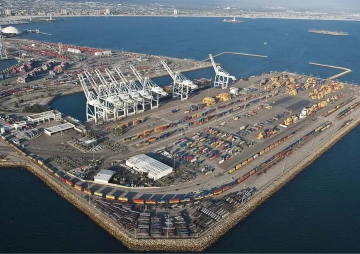The opening of Myanmar, which till recently was considered a black hole, has unfolded a new situation, with that country becoming an important bridge for India looking northwards, eastwards and into the Bay of Bengal region.

The opening of Myanmar, which till recently was considered a black hole, has unfolded a new situation, with that country becoming an important bridge for India looking northwards, eastwards and into the Bay of Bengal region, according to Mr. Pinak Ranjan Chakravarty, former Secretary (Economic Relations) in the Ministry of External Affairs.
Delivering a lecture on ’India’s Look East Policy: Diagnosis and Prognosis’ at the Kolkata Chapter of Observer Research Foundation on 30 December, 2013, Mr Chakravarty said the Look East Policy (LEP) was ’India’s response to a unipolar world.’
He said that the aim behind launching the LEP was two-fold: one, to promote closeness with the ASEAN to balance China. Two, to explore ASEAN as a market. Even today, the ASEAN+6 countries and East Asia Summit continue to be the core of the policy, he added.
Mr. Chakravarty said unlike the maritime disputes in South China Sea, disputes among nations in the Bay of Bengal -- between India and Bangladesh and Bangladesh and Myanmar -- have been in the Permanent Court of Arbitration and are likely to be settled soon. And hence, the kind of tense atmosphere in the South China Sea, arising out of China’s disregard of the UN laws of the sea, is missing in the Bay of Bengal region. Mr. Chakravarty said this improved LEP’s prospects in the region.
At the time when India launched the LEP, the basic area of cooperation between India and ASEAN was merely functional, he noted. This has now been expanded to include political security and defence cooperation. The two sides are now working closely on a range of international and regional issues, including United Nations reforms, global economic crisis, climate change, maritime security and future of community building in Asia, he said.
Mr. Chakravarty described the economic cooperation between India and ASEAN as a success. Bilateral trade has shown a steady growth from 2.9 billion in 1993 to 12 billion in 2003, with an annual growth of 11 percent. However, at a time when bilateral trade figures are improving, trade imbalance unfavourable to India is also on the rise, which is a concern, he noted. In 2008, the value of bilateral trade was over 47 billion of which ASEAN’s imports from India were 17.4 billion while ASEAN’s exports were valued at 30 billion.
In 2010, when India signed the Free Trade Agreement (FTA) with ASEAN, the value of bilateral trade was 50 billion, and this increased to 70 billion in 2013. One important aspect of LEP which needs to be observed is the progress of physical connectivity projects. The India-Myanmar-Thailand trilateral highway project is one such project which would be crucial in determining the LEP’s success, Mr. Chakravarty said.
He said while India is a participant in the Trans-Asian Railway project, Myanmar is still not connected to either India or Thailand. And this restricts connectivity, he noted. Difficult terrain is one hurdle in India’s connectivity with Myanmar besides security issues, chiefly concerning China, Mr. Chakravarty said.
However, Dr. Anindya Jyoti Majumdar, Associate Professor, Department of International Relations, Jadavpur University, who was the discussant, opined that the LEP is one-dimensional and India must integrate the policy with its foreign policies towards Japan, U.S and China and implement the LEP in this grand context.
Dr. Majumdar said that the LEP today is in its 2nd phase. The LEP’s basic aim should be to create an arch of advantages for India based on economic exchanges and also to create a multi-lateral security order in the Asia-Pacific region, he said. "If we are to think about India’s role as a major actor in the Asia-Pacific region, that prescription would take LEP in the 3rd phase. LEP will go beyond ASEAN", said Dr. Majumdar.
However, Dr. Majumdar also said that the very idea of India being a major actor is a matter of debate. India can be a major power; it can even be a major actor compared to other South-East Asian countries. But in the Asia-Pacific region, which is the focus of the LEP, there are other actors like China, U.S and Japan. If we are to believe that power rests in comparative advantage, the extent of advantage for India in the Asia-Pacific region is limited, Dr Majumdar argued.
However, despite this, Dr. Majumdar conceded that the LEP looks like an aberration in India’s foreign policy inasmuch as it is pro-active as compared with reactive foreign policy which is so typical of India.
Among the important dignitaries who participated in the discussion were Mr. Fabrice Etienne, Hon. Consul General of France in Kolkata, Dr. Tansen Sen, Associate Professor of Asian History,Baruch College, City University, New York, and Mr. M. M. Mainul Kabir, Counselor (Political) of the Bangladesh Consulate in Kolkata, apart from many senior academics and scholars.
The views expressed above belong to the author(s). ORF research and analyses now available on Telegram! Click here to access our curated content — blogs, longforms and interviews.




 PREV
PREV

